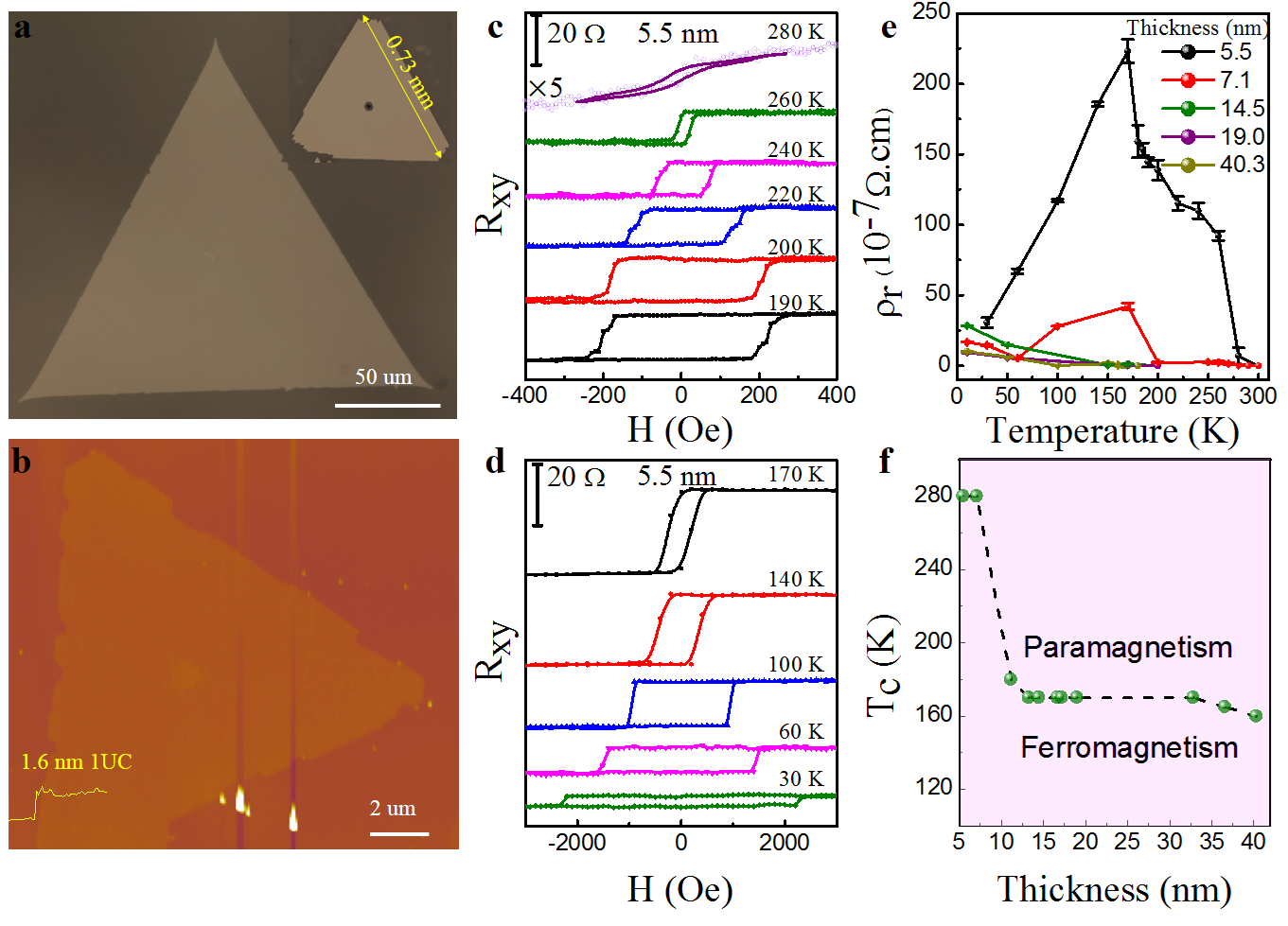On April 27th, Nano Letters published online the latest research results of the team of Professor He Jun of our school.
The title of the paper is "Tunable Room-temperature Ferromagnetism in two-dimensional Cr2Te3" Wuhan University. Wen Yao, a postdoctoral fellow in our school, is the first author, and Professor He Jun is the corresponding author.
He Jun’s research team applied van der Waals epitaxy to the two-dimensional growth of non-layered chalcogenide semiconductor materials, from hexagonal crystals to cubic crystal structures, from single-component to complex three-component systems, and realized PbS, CdTe, Cr2S3, respectively , Α-MnS, CrSe and other non-layered materials with different crystal structures, two-dimensional and array structure. In recent years, based on these research results, a series of research advances that have been valued by international peers have been obtained, including 6 Advanced Materials (Adv. Mater. 2020, 32, 1906874; Adv. Mater. 2019, 31, 1900056; Adv. Mater. 2017, 29, 1703122; Adv. Mater. 2016, 28, 617; Adv. Mater. 2016, 28, 6497; Adv. Mater. 2016, 28, 8051-8057), 1 Nano Letters (Nano Lett. 2019, 19 , 2154-2161); 2 ACS Nano (ACS Nano 2019, 13, 14519−14528; ACS Nano 2019, 13, 12662-12670).
Two-dimensional (2D) materials, novel physical phenomena appear when the size is reduced to atomic thickness, such as Ising superconductivity, quantum spin Hall effect (QSHE) in topological semimetals, strong room temperature ferroelectricity, etc. 2D As an important part of the 2D material family, ferromagnet has attracted much attention due to its unique physical properties. Based on the Mermin-Wagner theorem, thermal fluctuations will destroy the long-range ferromagnetic order in the 2D isotropic Heisenberg model. However, a recent report revealed the long-range ferromagnetic order of two-dimensional insulating Cr2Ge2Te6, CrI3 and metal Fe3GeTe2, VSe2, which triggered an upsurge in the research of two-dimensional ferromagnetic materials. On the basis of the research on the controllable preparation of van der Waals epitaxy method, He Jun's research group further realized the large-area preparation of Cr2Te3 single crystal with 1 to 2 unit cell thickness. The Curie temperature (Tc) of 2D ferromagnets is dominated by the magnetic coupling between layers, and the Tc decreases as the thickness decreases, and is much lower than room temperature. However, room temperature ferromagnetism is very important for practical applications such as spintronic devices and magnetic storage. The study found that room temperature ferromagnetism can be achieved by modulating the thickness of 2D Cr2Te3. When the Tc of Cr2Te3 changes from 160 K in bulk material to 5-6 unit cell thickness by modulating the thickness of the material, its Tc will rise sharply to 280 K. The intensity of magnetization and the anomalous Hall effect (AHE) measurement provide clear evidence for the existence of spontaneous magnetization at room temperature. The theoretical model indicates that the surface reconstruction of Cr2Te3 may be the origin of the abnormal thickness dependence of Tc. This size modulation method opens up a new way to manipulate ferromagnetism.

Topography and abnormal Hall characteristics
Paper link:https://pubs.acs.org/doi/10.1021/acs.nanolett.9b05128